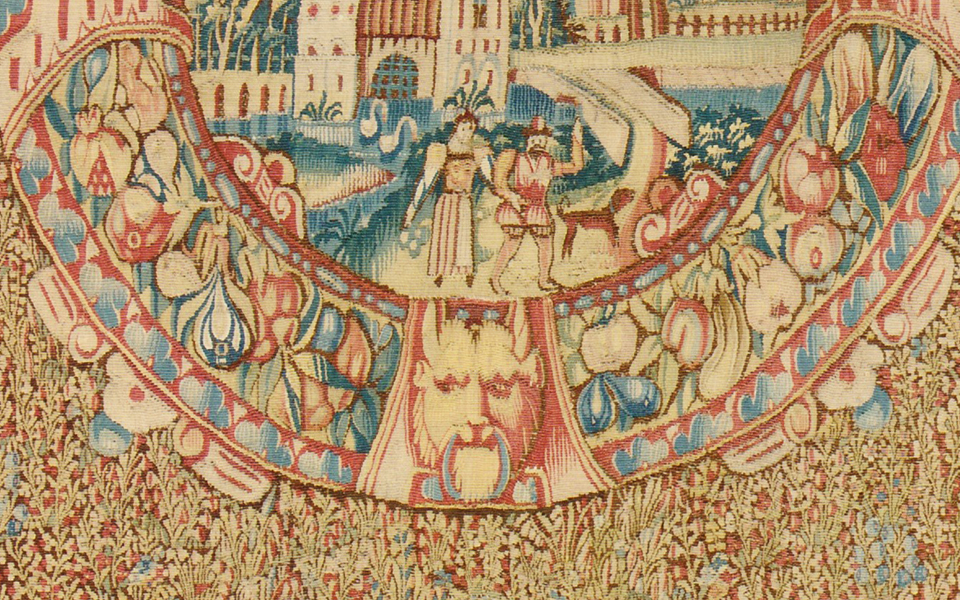
A blooming Garden in Wool and Silk
The charm of this millefleurs tapestry, woven in wool and silk, is enhanced by a medallion placed just in the middle of a dense field of small bouquets, laying over a warm tones background. The medallion is made of a floral wreath with fruits, ribbons and masks, encircling a mountain landscape with woods, a castle, a small village and a couple of courtiers in the foreground.
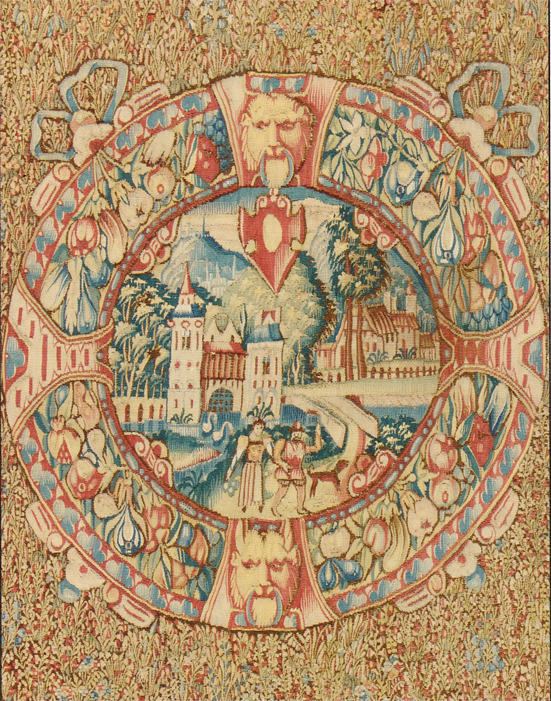
The French term millefleurs refers to a category of tapestries with thousands of small flowers, studding the background and often surrounding profane or allegorical scenes. The theme refers to the ideal of a ver perpetuum, or eternal spring (Garden of Eden). It is believed that this kind of tapestry was originally born in the French Loire, then rapidly spreading and asserting itself in Flanders, between Bruges and Brussels. Among the most famous millefleurs we can undoubtedly mention the Lady with the Unicorn tapestries series, now in the Musée de Cluny in Paris.
Importance and fame of this kind of tapestries is documented since mid 15th century among Italian, English and Spanish noblemen and it survives throughout the whole 16th century (Demarcel 1999). Flemish and French travelling weavers made millefleurs also in Italy: a workshop established in Ferrara around 1445 by Lionello d’Este and run by Flemish tapestry makers, is certainly the most important evidence of this.
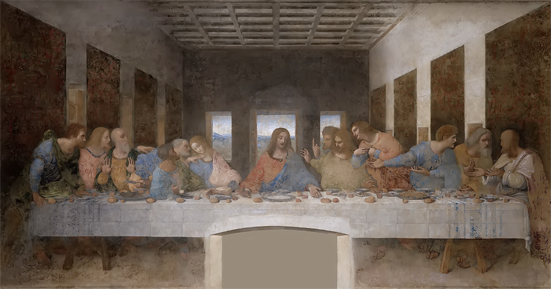
Among the many iconographic references to the Italian diffusion of the millefleurs, the Last Supper painted by Leonardo da Vinci in the Refectory of Santa Maria delle Grazie in Milan (1496-1498) certainly stands out: on the side walls, eight tapestries may still be identified, even if damaged by time as the whole work; a confirmation comes from the Last Supper painted later by his pupil Giampietrino (around 1520, today in Oxford).
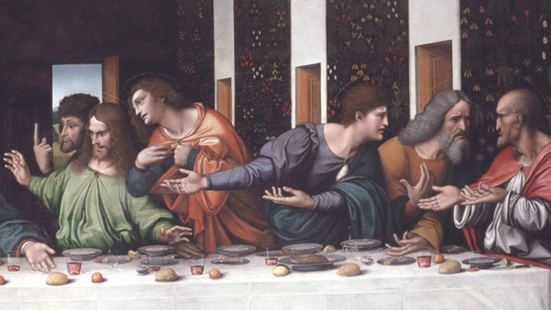
Going back to the tapestry here presented, the denseness of the flowers and the comparison with other known pieces allows for an attribution to Bruges workshops. A pair of tapestries with a central medallion representing the History of Abraham, placed over a background similar to that of our millefleurs, bears not by chance the city of Bruges mark on the outer border: in fact an Imperial Act was issued in 1544, requiring to add the city mark and the weavers names to tapestries, and that represents an important date post quem (Delmarcel and Duverger 1987; Delmarcel 1999).
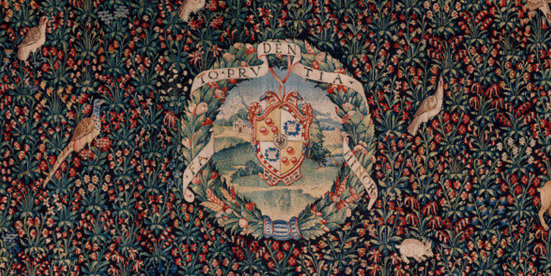
Similarly, one can compare the millefleurs tapestries bearing the coat of arms of the Giovio family from Como (now at the Victoria and Albert Museum and dated 1540-45: Adelson 1994) and some fragments from a series woven around 1528-1530 for the Court of Bruges by Antoon Segon, after drawings by Lancelot Blondeel and Willem de Hollander or Joost van Beke (Delmarcel and Duverger 1987; Delmarcel 1999); furthermore we can mention a nice millefleurs tapestry in the Metropolitan Museum in New York.
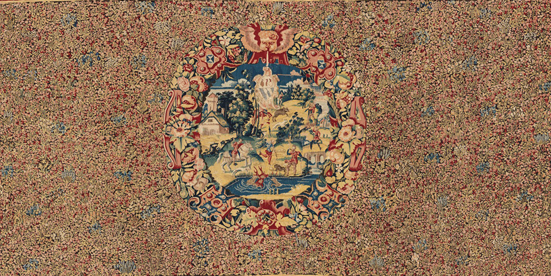
Lastly, our example can be compared with: a tapestry with six medallions over a very similar background (Göbel 1924, fig. 253), and a fragment from the C.S. Wadsworth Trust, sold by Parke-Bernet Galleries in New York in 1948: the latter features a medallion enclosed in a garland, that is identical to that of the tapestry proposed here; moreover, it also shows the same coat of arms and this means that most probably, the two tapestries belong to the same series.
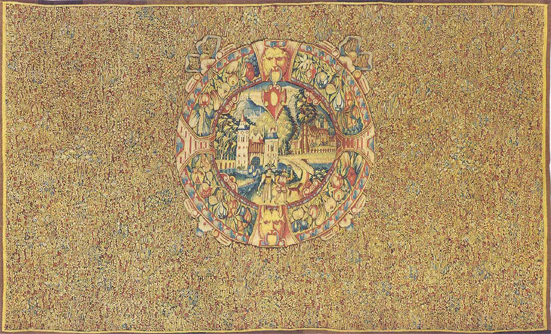
MILLEFLEURS TAPESTRY
Bruges
Wool and silk
Circa 1550
Cm 155 x 259
Provenance: Comtesse de la Roche-Aymon, Paris; Arthur Curtiss James; Parke-Bernet Galleries, New York, 13-14 November 1941, lot. 392; Italia, Private collection; Christie’s, London, 10 October 1998, lot. 241.
References: H. Gobel, Tapestries of the Lowlands, New York, 1924, fig. 253; Parke – Bernet Galleries, New York, auction sale, 11 December 1948, lot. 46; Delmarcel e E. Duverger, Bruges et la Tapisserie, exh. catalogue, Bruges, 1987, pp. 184,188-189, fig. 3/8 e 3/9; C. Adelson, European Tapestry in the Minneapolis Insitute of Arts, Minneapolis, 1994, fig. 50; G. Delmarcel, Flemish Tapestry from the 15th to the 18th century, Tielt, 1999, pp. 180-181.
© 2013 – 2024 cesatiecesati.com | Please do not reproduce without our expressed written consent
Alessandro Cesati, Via San Giovanni sul Muro, 3 – 20121 Milano – P.IVA: IT06833070151